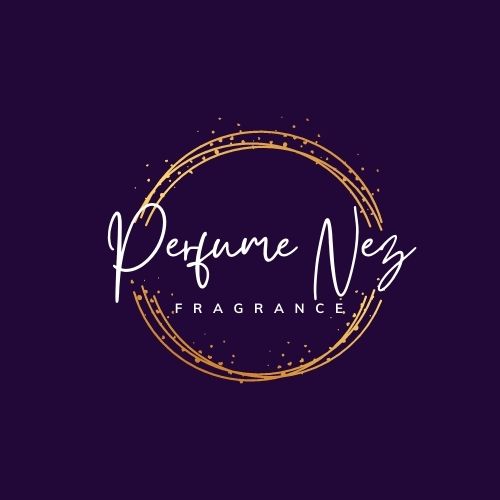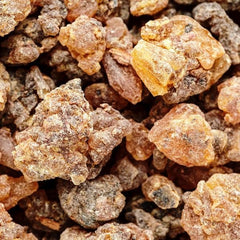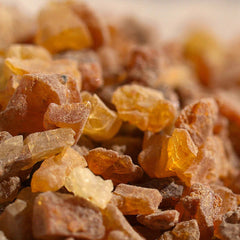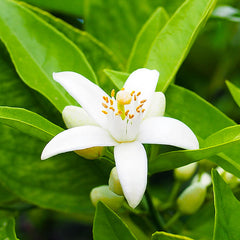What Does Cardamom Smell Like?
Click For Affordable Inspired Perfume Alternatives

Embark on a aromatic journey to the spice bazaars of the East and unravel the captivating scent of cardamom. Originating from the Indian subcontinent, cardamom is a fragrant spice that has been cherished for centuries. Join us as we explore the question: What does cardamom smell like?
What Does Cardamom Smell Like?
The fragrance of cardamom is a symphony of warm, spicy, and slightly sweet notes that create a captivating olfactory experience. Imagine the aromatic allure of exotic spice markets combined with a hint of citrus freshness. Cardamom's scent is a celebration of its rich cultural heritage, offering a warming and inviting aromatic journey.
Cardamom's Spicy Warmth: A Culinary Delight
As you approach cardamom, the first olfactory impression is a burst of spicy warmth reminiscent of bustling spice bazaars. Picture the comforting aroma of freshly ground cardamom seeds, with a rich and earthy undertone. Cardamom's fragrance is like a journey through an aromatic marketplace, enticing you with its spicy and inviting character.
Citrus Infusion: A Zesty Twist
The scent of cardamom is complemented by a subtle citrusy twist, adding a layer of freshness to its warm and spicy profile. The citrus infusion in cardamom's fragrance creates a harmonious balance, lifting the overall scent and enhancing its complexity. The combination of spice and citrus offers a delightful olfactory dance on the senses.
Sweet Undertones: Warm Elegance
While predominantly spicy, there are sweet undertones in cardamom's scent that contribute to its warm and elegant character. These sweet notes add depth and richness, creating a well-rounded and comforting fragrance. Cardamom's aroma is a delicate balance between spice and sweetness, making it a versatile and enchanting olfactory experience.
Earthy Resonance: Natural Sophistication
Delve deeper into the scent, and you may notice an earthy resonance that characterizes cardamom's fragrance. It's as if the aroma carries the essence of the plant itself, grounding the spice with a touch of natural sophistication. The earthy undertones in cardamom's scent contribute to its warm and comforting allure.
Cardamom's Cultural Tapestry
Hence, cardamom's fragrance is a cultural tapestry of spicy warmth, citrusy freshness, sweet undertones, and earthy resonance. It stands as a testament to the rich heritage of this aromatic spice, offering a sensory experience that is both comforting and exotic. Cardamom, with its inviting and complex aroma, invites us to savor the spice-laden air of spice markets, a fragrant journey that unfolds with every enchanting whiff.
Factors Influencing the Scent of Cardamom Essential Oil
Cardamom essential oil is a carefully extracted essence designed to capture the rich and complex aroma of Elettaria cardamomum, commonly known as cardamom. The production of this essential oil involves various factors that contribute to the aromatic profile. Here are several factors that influence the scent of cardamom essential oil:
Extraction Method: The method used to extract cardamom essential oil, whether through steam distillation or other techniques, plays a crucial role in defining the aromatic profile. Specific extraction methods contribute to the faithful recreation of the spice's warm and complex scent.
Chemical Composition: Cardamom essential oil is a complex mixture of chemical compounds, including terpenes, esters, and ethers. The specific composition of these compounds determines the unique fragrance of the essential oil.
Geographic Origin: The geographic origin of cardamom plants can influence the scent of the essential oil. Different varieties of cardamom grown in distinct regions may exhibit nuanced differences in their aromatic profiles.
Harvesting Time: The stage at which cardamom pods are harvested can impact the oil's scent. Pods harvested at different stages of maturity may contain varying concentrations of aromatic compounds, influencing the overall fragrance.
Soil and Climate: The quality of the soil and the climate in which cardamom plants are cultivated contribute to the development of the aromatic compounds in the seeds. These environmental factors play a role in shaping the spice's fragrance.
Storage Conditions: Proper storage conditions for cardamom essential oil, both before and after extraction, are essential to maintain its stability and scent. Storing it in a cool, dark environment helps preserve the freshness of the essential oil.
Quality of Cardamom Pods: The quality of the cardamom pods used in the extraction process directly impacts the fragrance of the essential oil. Fresh and high-quality pods contribute to a more vibrant and authentic cardamom scent.
Distillation Equipment: The type of distillation equipment used in the extraction process can affect the final aromatic profile of cardamom essential oil. Modern and efficient distillation methods contribute to the preservation of the oil's desirable characteristics.
Perfumer's Expertise: The expertise and creativity of the perfumer or essential oil extractor are crucial. Professionals skilled in the art of distillation and extraction leverage their knowledge to produce cardamom essential oil with a distinct and delightful fragrance.
Regulatory Compliance: Adherence to regulatory standards and guidelines in the production of cardamom essential oil is crucial. Compliance ensures the safety and quality of the essential oil for various applications.
Blending Possibilities: Cardamom essential oil is often used in blends with other essential oils. The art of blending involves combining different aromatic notes to create a harmonious and well-balanced fragrance.
Consumer Preferences: The fragrance preferences of consumers play a role in the production of cardamom essential oil. Perfumers may adjust formulations based on market trends and evolving consumer tastes.
Sustainable Practices: Sustainable and ethical practices in cardamom cultivation and oil extraction contribute to the overall quality of the essential oil. Responsible sourcing and environmentally friendly practices are increasingly important in the fragrance industry.
Exploring different batches and sources of cardamom essential oil allows consumers to experience a range of warm, spicy, and inviting scents reminiscent of the enchanting spice bazaars. Individual preferences play a significant role in selecting the perfect cardamom essential oil for various applications.
What to Look for When Choosing Cardamom Essential Oil
Selecting a cardamom essential oil allows you to enjoy the warm and spicy aroma of this versatile spice. Whether used in aromatherapy, perfumery, or DIY projects, consider these factors to ensure you choose a high-quality and authentic cardamom essential oil:
Aromatic Authenticity: Seek a cardamom essential oil that authentically captures the warm, spicy, and slightly sweet scent of real cardamom. Look for an essential oil that embodies the unique aromatic notes characteristic of quality cardamom.
Distillation Method: Consider the distillation method used to extract the essential oil. High-quality cardamom essential oil is often produced through steam distillation, preserving the integrity of the aromatic compounds.
Chemical Composition: Check for information on the chemical composition of the cardamom essential oil. A well-crafted essential oil will contain a balanced mixture of terpenes, esters, and other compounds that contribute to the spice's complex fragrance.
Origin and Source: Be aware of the geographic origin of the cardamom used to produce the essential oil. Different varieties of cardamom from distinct regions may offer unique aromatic profiles.
Color and Clarity: Examine the color and clarity of the essential oil. High-quality cardamom essential oil is typically clear and may have a pale yellow to colorless appearance.
Packaging: Assess the packaging of the essential oil. Opt for a dark or opaque bottle to protect the oil from light exposure, preserving its freshness and preventing deterioration over time.
Purity and Additives: Choose a cardamom essential oil that is pure and free from additives or dilutions. High-quality oils do not contain unnecessary fillers and maintain the natural integrity of the spice's fragrance.
Botanical Name: Confirm that the essential oil is derived from Elettaria cardamomum, the botanical name for true cardamom. This ensures that you are getting an authentic cardamom scent.
Sourcing Practices: Consider the manufacturer's commitment to ethical and sustainable sourcing practices. Brands that prioritize responsible harvesting and production contribute to a more conscientious choice.
Testing Options: Look for essential oil brands that offer testing options or sample sizes. This allows you to experience the scent firsthand before committing to a larger quantity, ensuring it aligns with your preferences.
Manufacturer Reputation: Research the reputation of the essential oil manufacturer or brand. Choose well-established brands with positive reviews, as they are more likely to produce reliable and high-quality essential oils.
Ethical and Sustainable Practices: Consider the manufacturer's commitment to ethical and sustainable practices. Brands that prioritize responsible sourcing and environmentally friendly production contribute to a more conscientious choice.
By considering these factors, you'll be better equipped to choose a cardamom essential oil that not only aligns with your preferences but also ensures a high-quality and aromatic experience in your chosen applications.
Where to Find Reputable Cardamom Essential Oils
Finding high-quality cardamom essential oils involves exploring reputable sources that prioritize authenticity and purity. Here are some places where you can find reliable cardamom essential oils:
-
Specialty Essential Oil Retailers: Explore specialty retailers that focus on essential oils and aromatherapy products. These stores often carry a variety of essential oils, including cardamom, with a commitment to quality.
-
Online Essential Oil Brands: Reputable online platforms dedicated to essential oils and natural products may offer a range of cardamom essential oils. Look for well-established brands with transparent sourcing and production practices.
-
Natural Health and Wellness Stores: Local health and wellness stores that specialize in natural products may carry a selection of essential oils, including cardamom. Inquire about the sourcing and quality of the oils they offer.
-
Aromatherapy Shops: Stores specializing in aromatherapy products and essential oils are likely to have cardamom essential oil in their inventory. These shops often prioritize high-quality and authentic scents.
-
Herbal Apothecaries: Visit herbal apothecaries that focus on natural remedies and botanical products. They may carry cardamom essential oil sourced from reputable suppliers.
-
Organic and Natural Markets: Farmers' markets or stores that emphasize organic and natural products may offer cardamom essential oils. Check with vendors who specialize in essential oils or natural fragrances.
-
DIY and Craft Stores: Some DIY and craft stores may have essential oil sections that include a variety of scents, including cardamom. Check the product descriptions and sources to ensure authenticity.
-
Holistic and Wellness Centers: Wellness centers or holistic health practitioners may carry a curated selection of essential oils. Inquire about their cardamom essential oil offerings and their commitment to quality.
-
Online Marketplaces: Platforms like Etsy or other online marketplaces featuring handmade or artisanal products can be sources for cardamom essential oils. Look for sellers with positive reviews and detailed information about their products.
-
Word of Mouth Recommendations: Seek recommendations from friends, family, or members of essential oil communities for trusted sources of cardamom essential oils. Personal experiences and suggestions can guide you to reputable suppliers known for quality and authenticity.
-
Herbal and Botanical Shops: Explore shops that focus on herbal and botanical products. These establishments may carry a selection of essential oils, and you can inquire about the quality and sourcing of their cardamom oil.
-
Natural Perfume Retailers: Specialty perfume shops that prioritize natural and botanical fragrances may offer cardamom essential oils known for their warm and spicy notes.
Before making a purchase, carefully read product descriptions, check reviews, and ensure that the cardamom essential oil aligns with your intended use. Authentic and reputable sellers provide clear information about the composition, sourcing, and quality of their essential oils.
20 Questions and Answers about Cardamom:
-
What is cardamom?
- Cardamom is a spice derived from the seeds of plants belonging to the ginger family. There are two main types: green cardamom (Elettaria cardamomum) and black cardamom (Amomum subulatum).
-
How is cardamom used in perfumery?
- Cardamom is used in perfumery for its aromatic and spicy fragrance. It adds warmth, depth, and a hint of sweetness to fragrance compositions.
-
What are the olfactory characteristics of cardamom?
- Cardamom has a warm, sweet, spicy, and slightly floral aroma. It is often described as having a rich and exotic scent.
-
Does cardamom belong to a specific fragrance category?
- Cardamom is often classified as a spicy note in perfumery. It can be found in both oriental and woody fragrances.
-
How is cardamom essential oil extracted?
- The essential oil of cardamom is typically extracted through steam distillation of the dried seeds.
-
Which part of the cardamom plant is used in perfumery?
- The seeds of the cardamom plant are the most commonly used part in perfumery.
-
What other notes does cardamom complement well in fragrances?
- Cardamom pairs well with citrus notes, floral notes like rose and jasmine, as well as other spices such as cinnamon and clove.
-
Is cardamom more commonly used in men's or women's fragrances?
- Cardamom is versatile and can be found in both men's and women's fragrances. Its warm and spicy character suits a variety of scent profiles.
-
Can cardamom be a dominant note in a fragrance, or is it typically used as a supporting note?
- Cardamom can play a dominant role in a fragrance, especially in compositions where a spicy and exotic character is desired. It is also commonly used as a supporting note to enhance other elements.
-
Does cardamom have any therapeutic properties in aromatherapy?
- Yes, cardamom essential oil is believed to have therapeutic properties, including being a digestive stimulant and having anti-inflammatory effects.
-
Are there different varieties of cardamom used in perfumery?
- Green and black cardamom are the two main varieties used in perfumery, with green cardamom being more widely utilized.
-
What cultural or regional associations does cardamom have in perfumery?
- Cardamom is often associated with Middle Eastern and Indian fragrances, where it has been used for centuries in traditional perfumery and cuisine.
-
Can cardamom be found in modern, contemporary fragrances?
- Yes, cardamom is a popular note in modern fragrances, adding a unique and sophisticated touch to a wide range of scent compositions.
-
Does cardamom have any symbolic significance in perfumery?
- In some cultures, cardamom is associated with warmth, hospitality, and exoticism, making it a symbol of luxury and comfort in perfumery.
-
Can cardamom be blended with fresh or aquatic notes in perfumery?
- While cardamom is more commonly associated with warm and spicy fragrances, it can be blended with fresh and aquatic notes to create a well-balanced and intriguing scent.
-
Are there any popular fragrances that prominently feature cardamom?
- Yes, many fragrances feature cardamom, such as Dior Homme Sport, Spicebomb by Viktor & Rolf, and Cardamom and Mimosa by Jo Malone.
-
Does the quality of cardamom oil vary depending on its origin?
- Yes, the quality and aroma of cardamom oil can vary based on factors such as the region it is sourced from and the specific species of cardamom.
-
Can cardamom be used in combination with sweet or gourmand notes?
- Absolutely. Cardamom's warm and spicy profile can complement sweet and gourmand notes, creating a well-balanced and inviting fragrance.
-
Is cardamom used differently in niche perfumery compared to mainstream perfumery?
- Niche perfumers may explore unique facets of cardamom, using it in unconventional ways to create distinctive and artisanal fragrances.
-
Can cardamom be found in other fragrance products besides perfumes?
- Yes, cardamom can also be used in scented candles, body lotions, and other fragranced products, providing a versatile aromatic experience.
Buy Perfumes - Best Online Retailers
Click For Affordable Inspired Perfume Alternatives
Click For The Best Niche Perfumes & Decants
Pheromone Perfumes - Confidence, Attraction & Appeal - Click For More
Home Fragrances & Candle Warmers - Click To Scent Up Your Spaces Today!



